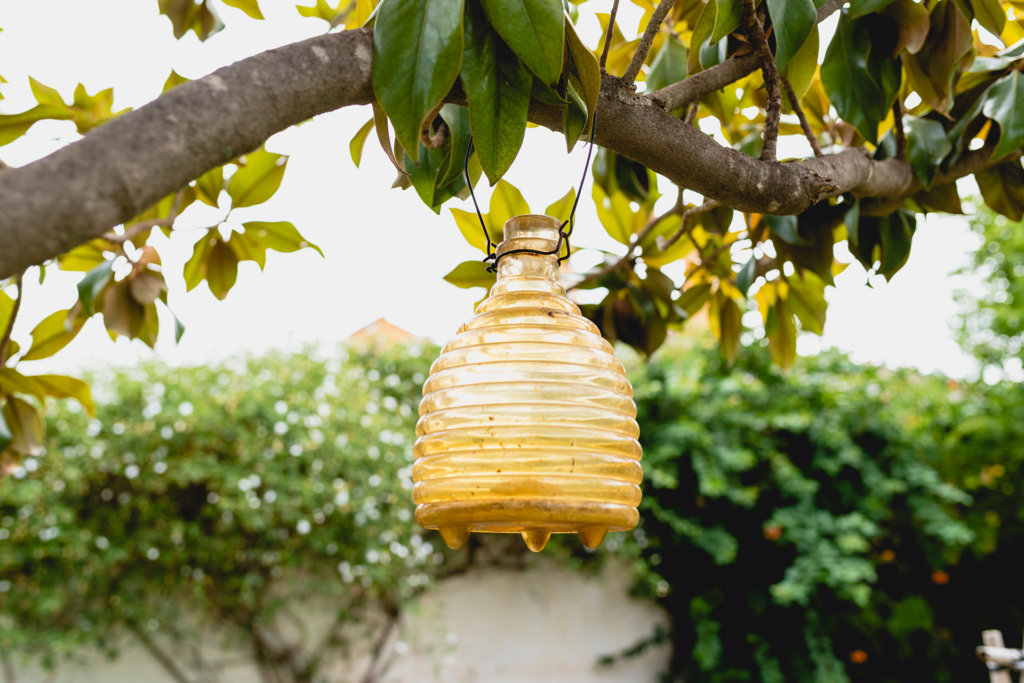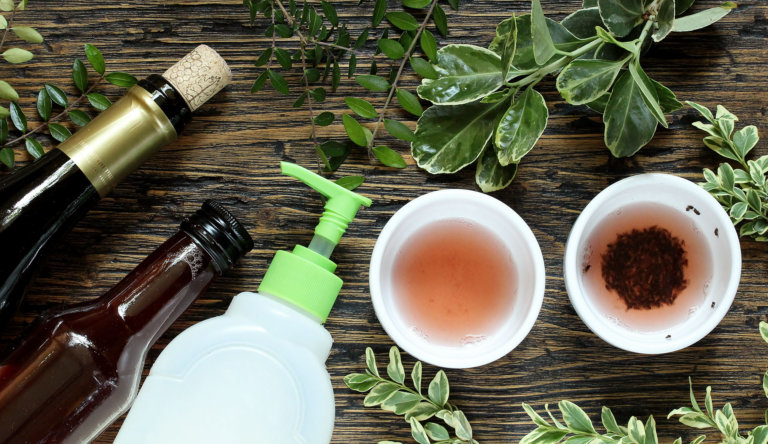Wasps are an important part of our ecosystem, and having some of them in your garden helps control various pests. But these aggressive flyers can be quite annoying when you are trying to relax in your garden.
Even worse, their sting can be very dangerous for those allergic to wasps. If they really like your home, they could even create nests in your garden, and you really don’t want that to happen!
Here are our top ten eco-friendly ways to keep wasps away from your home while avoiding nasty chemicals. From preventing wasps from visiting your garden to removing wasp nests, these methods have minimal impact on the environment and your health.
Method 1: Avoid Strong Smells in Your Garden
You do not want to have many wasp attracting factors in your garden. Avoid leaving rubbish outside, and make sure you’re regularly emptying and washing your bins. As much as they like nasty smells, sweet-smelling plants also attract them. Keep heavily fragrant flowers away from your doors and windows.
Similarly, when you are sitting in the garden, avoid wearing sweet and floral smelling perfume, and bright clothes, especially yellow or white. You may just look like a giant flower, and wasps will love that!
Method 2: Use Wasp-Repelling Plants
Wasps seem to detest the smell of several plants. The great news is that many of these plants are useful herbs and some produce beautiful flowers.
Fragrant herbs such as Mentha spicata (Spearmint), Thymus vulgaris (Thyme), Cymbopogon (Lemongrass) and Artemisia absinthium (Wormwood) are excellent choices for your garden. Flowers such as Calendula (Marigolds) and Mentha pulegium (Pennyroyals) are also detested by wasps. Be careful when using wormwood, as this shrub is poisonous to people and pets. Avoid using this if you have small children or animals in your house.
You can place these wasp-repelling plants near your door or windows and patio. Avoid plants such as Sweet Fennel and Queen Anne’s Lace as these are commonly known to attract wasps.
Method 3: Place a Fake Wasps Nest
Various research has shown that wasps are territorial, and they would not build a nest within a few hundred feet from another nest. They would also avoid visiting areas where a rival nest is visible.
Fake nests are chemical-free and are scientifically proven to work. They are inexpensive too. However, you can also easily make one yourself by using a balloon, newspaper, and a string. You can hang a fake nest under a tree or under an umbrella to trick the wasps into thinking that is a rival nest.
Fake nests are light and easy to take with you if you’re going camping or on a picnic. This is also a humane way to keep the wasps away by not killing them.
Method 4: Mix Essential Oils
As we said before, there are certain scents that wasps don’t like at all. Besides planting flowers, you can mix essential oils to spray certain areas of your house.
Research from the Journal of Pest Management Science has shown that a combination of lemongrass, clove, and geranium essential oils has great potential as a wasp repellent.
Mix several (5-6) drops of each of these three essential oils and dilute them with one cup of water. Put the mix into a sprayer and use it on areas such as picnic tables and around the patio. Don’t forget to spray any cracks in the outside walls or near the windows, where wasps often decide to build nests.
Peppermint oil is another good alternative, according to the same study. You can also use the mixes on your skin just like any other mosquito repellent, as long as you’re not allergic.
Method 5: Create a Wasp Trap Using a Bottle
Like for most pests, you can create a trap by tricking the wasps with delicious treats. Get a 1.5-liter plastic bottle and cut it in half. Wasps like anything sugary, so fill the bottom half of the bottle with water and add honey or syrup. Remove the lid from the other half of the bottle and push it on the bottom half, upside down.
The sweetness will attract wasps, and once they go through the hole, they will be trapped inside. Some will be drowned in the water; others will live for a little while.
If you are just trying to enjoy a picnic, this is a great way to keep the buzz away. If there are still some alive when you finish, you can carefully release them. If you are allergic to wasps, do not release them yourself, as they may be very irritated and may sting you.
Method 6: Make a Sticky Wasp Trap
Another easy wasp trap is to create a sticky surface. Take a piece of cardboard or wood and pour some thick sweet syrup on it. Wasps will be attracted to the sweet smell, and once they land on the trap, they will be stuck on the liquid. This is an easy and efficient way to keep the wasps away without too much effort.
Method 7: Buy Glass Wasp Traps
If DIY is not your best skill, you can opt for some fancy looking glass wasps traps. These highly-regarded traps that are sold on Amazon come in a variety of colors. They even look like ornaments in your patio. You just need to add delicious sweet treats like orange juice, honey, and syrup inside the trap and enjoy a buzz-free day.
You should empty the wasp trap every two days to avoid them getting too nasty. The dying wasps also release chemicals that attract others, so you don’t want the trap to turn against you by attracting more wasps to your garden.
Although traps lead to the death of some wasps and other insects, they will not be able to go back to their hive and notify other wasps that your garden is a good place. This may deter more of them from visiting your garden or from creating nests in your home.
Method 8: Use Water and Soap to Remove a Small Wasps Nest
If you have noticed a small wasps nest, you can remove it yourself. However, if you are in doubt or suffer from allergies, you should ask for help from professional pest controllers.
This method is commonly used to destroy a small exposed nest. Soap and water kill wasps very quickly, as the soap breaks down the natural wax that wasps have in their body, and this affects their breathing. Mix 3 tablespoons of soap dish with 3 cups of water and use a high volume sprayer to reach the wasps from a good distance.
It is recommended that you do this during the night when the wasps are all back to their hive and are asleep. Wear gloves, glasses, and protective clothes if possible.
According to Chris Walker, a wasp removal expert, you should not spray the opening of a nest inside a structure in your home. As the actual nest is likely to be in a void deep inside the structure, spraying will not kill the wasps. Instead, it will push them towards finding another way to get out, which may lead them to enter your house.
Method 9: Get Rid of Wasp Nests in the Ground
If you notice a larger number of wasps than usual, check for nests on the ground. A ground wasps nest usually has a small pile of dirt around the hole where they enter and leave.
Fill a bucket with water and 1/3 cup of dish soap, and pour it inside the hole. Cover the hole with the bucket to avoid any wasps leaving. Again, do this during the night when the wasps are asleep.
Method 10: Keep the House Well-Sealed
Finally, check the exterior of your house for broken panels, small gaps, cracks in the walls, or any other crevices which would make a good home for wasps. Repair and seal any cracks on windows and doors.
Make sure that your garden is rodent-free because wasps, especially yellow jackets, often nest in existing tunnels built by rodents.







